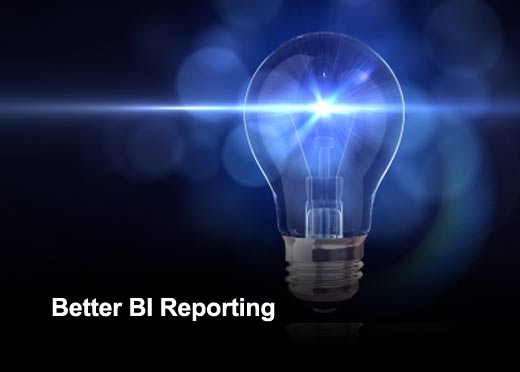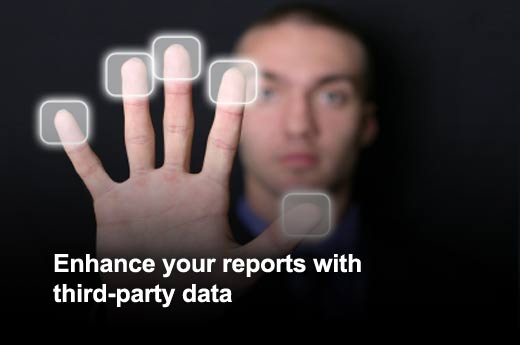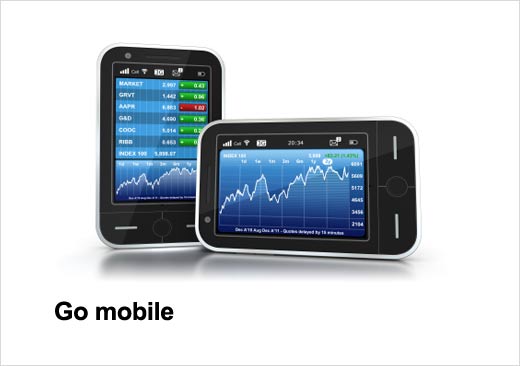One of the most common functions of business intelligence is reporting — so much so that the terms are often used interchangeably. Reporting is really the presentation layer of BI, or the interface between the data repositories and the decision-makers. As more employees in a company become responsible for decision-making, easy access to reporting and analysis has become paramount. Companies are moving beyond the notion of static reports for a small subset of users, and opening reporting up to knowledge workers (the casual BI user).
Reporting for some organizations is akin to manually manipulating data in Excel spreadsheets. But organizations that want to take their reporting to the next level should consider the following 10 pieces of advice from global BI leader arcplan.
Click through for 10 tips from arcplan on improving business intelligence (BI) reporting.
Reports that are visually confusing or overwhelming will not be favored by BI consumers. In the case where your organization is working off of reporting dashboards, some pitfalls to avoid include too many visuals on one screen, inappropriate use of graphs and the wrong chart types for your data. Charts should include summary-to-detail navigation so users do not have to leave the screen to analyze what they are seeing. There are many rules to great dashboard design, but the key is to let the reports tell the story and not let the screen be overrun by imagery and "flashing lights."
In-memory processing takes advantage of the speed of RAM to decrease the response time for queries, significantly enhancing the end user's experience. It allows report creators and consumers to engage with large data sets quicker than ever before, which results in faster and more proactive decision-making thanks to more immediate, interactive analysis. Most reporting platforms include in-memory capabilities, but only some address security (making sure only the right sets of users have access to certain data and queries).
Allow users to select their most important reports to be scheduled for recurring, secure email delivery so they do not have to log into the BI system every day. Receiving reports regularly in PDF, PowerPoint or Excel spreadsheets is one step toward easy access to analysis for those who need it.
Add commentary to your reports to give context to the data. Ensure that your analysts are filling in the gap between what they see in the data and what management is taking away, especially for variances in expected results.
Reports that integrate data from the cloud can provide analysts with entirely new insights. Consider integrating data from Standard & Poor’s with your accounts receivable information to match up delinquent clients with their S&P credit rating, or displaying product revenues from your financial system with customer data from your CRM.
Uncovering unexpected insights is the crown jewel of data analysis, and many companies are not tapping into the data sources that can provide them with this opportunity. By collecting and analyzing social media data, for example, alongside the rest of your corporate data, you get an enhanced view of the people who purchase (or don’t purchase) your products and services. Social data can help you spot early trends that can drive product development, product delivery and marketing messaging.
Gartner predicts that by 2013, 33 percent of BI functionality will be consumed via handheld devices. Executives and road warriors are becoming increasingly comfortable with receiving reports on their smartphones and tablet PCs and are pushing for data access when they need it, wherever they need it. The easiest to push to mobile first are your existing reports, slightly redesigned to incorporate large fonts and easy finger navigation to facilitate drill-down. Mobile reports are not just about viewing data — interaction needs to be taken into account.
As reporting evolves beyond static reports, business users are clamoring for a means to easily interact with data without having to use complex tools or rely on IT. New ad-hoc reporting solutions allow non-power users to dynamically build reports from live data with drag-and-drop to gain instant insight, and then save and share their reports. These solutions allow BI to go beyond the domain of the typically small group of power users and put analysis into the hands of the knowledge workers who need it.
Many businesses have a rich repository of existing reports and data sources that can be made accessible to those who need them. Periodic auditing to determine the most- and least-used reports can help you keep your reports relevant and useful.
Adding more metadata to your reports (like standard tags, author information, time periods covered, etc.) makes them more likely to be found and used, rather than having their contents (and effort) duplicated time and time again. Going further, allowing reports to be rated, annotated and shared with colleagues is a step toward the future of BI — collaboration.













